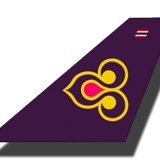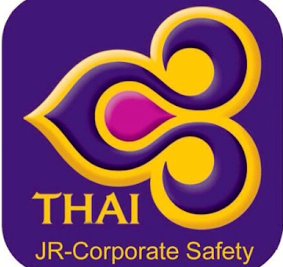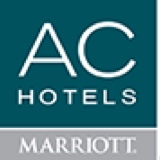Information
-
Document No. JR-WI-04-02
-
New destination
-
Client / Site
-
Conducted on
-
Prepared by
Introduction This checklist is intended to enable prompt identification of sources of possible risk so as to allow the consideration of any measures for their mitigation. Content assumes the 'most probable case' scenario. Accordingly, it will sometimes be the case that suggested 'information acquisition' will be deemed unnecessary for a particular assessment to be sufficient.
Operational Risk Assessment (Item marked with * also apply to new aircraft type at an existing destination)
Airport
-
1.1. Make a general Airport Operational Safety Assessment covering airside WIP notification, FOD control, airport signage/lighting/surface marking including taxiway centerline ( both standard and maintenance). Examine a copy of the Airport SMS document.
-
1.2. *Establish that the runways and taxiways pavement surface structure are dimensions and sufficient for the intended aircraft type (s).
-
1.3. *Review Aircraft ground handling contractor(s) responsibilities with particular reference to aircraft loading certification, dangerous goods procedures and the ramp handling of aircraft.
-
1.4. *Review the airside procedures of the passenger handling contractor.
-
1.5. *Consider arrangements for aircraft line maintenance.
-
1.6. Review fuel supply arrangements and any possible fuel quantity issues.
-
1.7. *if appropriate, establish or review arrangements for aircraft ground de/anti icing.
-
1.8. Review standard airport security provision and consider if there is any case for enhanced security screening of freight, baggage or passengers. In particular consider the expected passenger profile with special regard to both the potential for disruptive behavior in flight fueled by alcohol and any possibility of an increased propensity to attempt to smoke covertly in flight.
-
1.9. *Review RFFS capability in relation to intended aircraft type (s).
-
1.10. Establish if there is any special degree of Bird or other Wildlife Strike Hazard, including seasonally, and if so assess the appropriateness of the mitigation - especially coastal sites, urban areas with poorly controlled refuse tipping and any tendency of seasonal shallow water bodies in vicinity.
-
1.11. ATS ground movement practices including directed taxi routing or general guidance procedures.
-
1.12. ATS runway use - is more than one active runway designated at one time? If so review any intersecting runway or runway crossing issue
-
1.13. *Aircraft Type specific ground issues - dimensions re taxi routes, gates, remote parking stands ext.
-
1.14. Runway undershoots or over-run issues - establish and consider if specific flight crew awareness is warranted
-
1.15. Runway Surface safety - profile issues (linear and transverse); reference friction records and cleaning of rubber deposite; braking action/friction performance when wet but not contaminated; procedures for measuring and communicating braking action when surface is contaminated; surface water drainage characteristics (profile, pavement wearing surface, grooving).
-
1.16. Weather Record - Wind Velocity, Visibility, Temperature range and prevalence of sudden short-duration heavy precipitation.
Flight Procedure and Local Flying Area
-
2.1. Review Terrain within 25 nm.
-
2.2. *Assess SID/STAR procedures for any possible operational issues arising
-
2.3. *Assess Aerodrome Operating Minima and consider carry out at least some checking of the proprietary plates used by the operator against the State AIP source. Check that any noise abatement requirements are included in procedures and that there is no conflict between Company power plant failure procedures and ATC procedures. Identify the extent to which these procedures represent a radical departure from those routinely flown by the flight crew/aircraft types which would be deployed. Decide if acceptance of discretionary visual contact approaches will be permitted by day, by night or in neither case by the Operator and if.
-
2.4. *If any (or even all) approaches will need to terminate with a visual final segment, review all aspects of such procedures carefully, including the day/night case and minimum in-flight visibility (IFV).
-
2.5. *Based upon all the above and on relevant determinations relating to aircraft performance, decide weather it is appropriate to 'fly' procedures in aircraft simulators to elicit any operational issues which might not otherwise be apparent.
-
2.6. Review overall ATC situation for any issues e.g language (s) used on RTF and level of English language competency beyond routine aviation English.
- no issue
- competency issue
- RTF issue
- both RTF and competency issues
-
2.7. Establish the availability of ATC 'safety net' such as STCA, MSAW and A-SMGCS
-
2.8. *Review any increased likelihood of 'nuisance' EGPWS and TCAS alert during approach or climb out
En Route
-
3.1. *Consider any drift down issues and identify route sections with an MSA which would preclude an emergency decent to 10,000 ft.
-
3.2. Check if operations outside controlled airspace will be involve and if so, review the implications
-
3.3. Review the balance of expected ATC service between procedural and radar control
-
Review risks of military activities in the general vicinity of transit airspace which might be prejudicial to safety of operations.
-
3.5. Establish any need for special diplomatic overflight clearance
Aircraft Performance (BKKOU)
-
4.1 *Calculate the extremes of the aircraft performance envelop airborne in relationship to aircraft weight, prevailing temperature and obstacle/terrain
-
4.2 *Assess departure and missed approach procedures for terrain clearance in both normal and engine out operations
-
4.3 *Review the potential for Payload/Range issues given the sector(s) intended and any restrictions to aircraft loading which might be required routinely or tactically
Final Determination (BKKOO)
-
5.1 *Categorize the Airport for each aircraft type A. Normal - routine new destination B. Requires special flight crew briefing notes or C. Requires special flight crew training required
- A. Normal-routine destination
- B. Requires special flight crew briefing notes
- C. Requires special flight crew training
-
For categories B or C airport, are necessary briefing/training material and procedures put in place for all flight crew?
-
5.2 Are all relevant current NOTAM and weather information made available to the flight crew preflight and/or inflight?













